1904 – 1906, 1910 – 1912 (extension added)
Architect: Otto Wagner
Georg-Coch-Platz 2, Vienna, Austria
Postal Savings Bank
The listed Austrian Postal Savings Bank in Vienna, built in two sections over a trapezoidal ground plan from 1904 to 1912, is Otto Wagner‘s most important work in terms of the development of modern architecture.
Facade
The effect of the rationally designed facade is essentially determined by the materials: Granite, marble and aluminum form a strict as well as simple rhythm of wall and openings.
The granite slabs of the facade’s base are fixed with countersunk pins with aluminum heads.
In contrast, the white marble panels of the upper floors, only two centimeters thick, are fixed with raised pins with aluminum heads.
This different method of fixing creates a subtle ornamentation, which is complemented by vertical platelets meant to suggest supports and bases of pilaster positions.
The fitting of the facade with aluminum-clad iron bolts represents both a technical necessity and a programmatic statement of modernity.
At the same time, as an iron-clad treasure chest, the building represents the prototype of safekeeping of saved and invested money.
Parapet and Statues
The central risalit of the Savings Bank is crowned by a parapet decorated with laurel wreaths.
The four-meter-high Nike statues at the upper corners of the main facade were designed by Othmar Schimkowitz and are made of cast aluminum.
The aluminum used by Otto Wagner as a new building material is also found in the striking canopy of the entrance.
The spacious vestibule leads to the central counter area in the glass-roofed courtyard.
Interior
The cashier’s hall with its thoughtfully designed details such as the lighting fixtures or the warm air blowers of the heating system is an outstanding example of functionalist architecture of the early modern era.
Otto Wagner designed all the details with the aim of achieving the greatest possible practicality and usability.
Floor coverings, wall panels, carpets, radiators, lamps, clocks, door buckles, standing desks, switches, stools, benches, armchairs, desks, closets, shelves and even safes are all subject to this principle.
Feet of the seating furniture in the Postal Savings Bank are covered with sleeves, armrests are covered with bands, which not only protects them from wear and tear, but also emphasizes their uniqueness.
Aesthetically, the utility value of the hot-air blowers in the central teller hall is exaggerated; they become icons of design.
“Everything modernly created must illustrate our own better, democratic, self-confident, sharp-thinking nature” Otto Wagner, 1913
Renovation
In 2005, the Savings Bank building underwent a general renovation.
The work mainly comprised the following areas: The restoration of the historically particularly significant public areas and the boardroom area, the removal of the subsequently erected window grilles in the base area of the building and the return of the interior rooms to the original building condition intended by Otto Wagner.
Furthermore the reconstruction and repair of the offices, the restoration of the large teller hall as well as the double-shell historic steel and glass roof structure above it, the renovation of the facades of the interior tile courtyard as well as the erection of a new protective roof over the tile courtyard to protect the historic building fabric below.
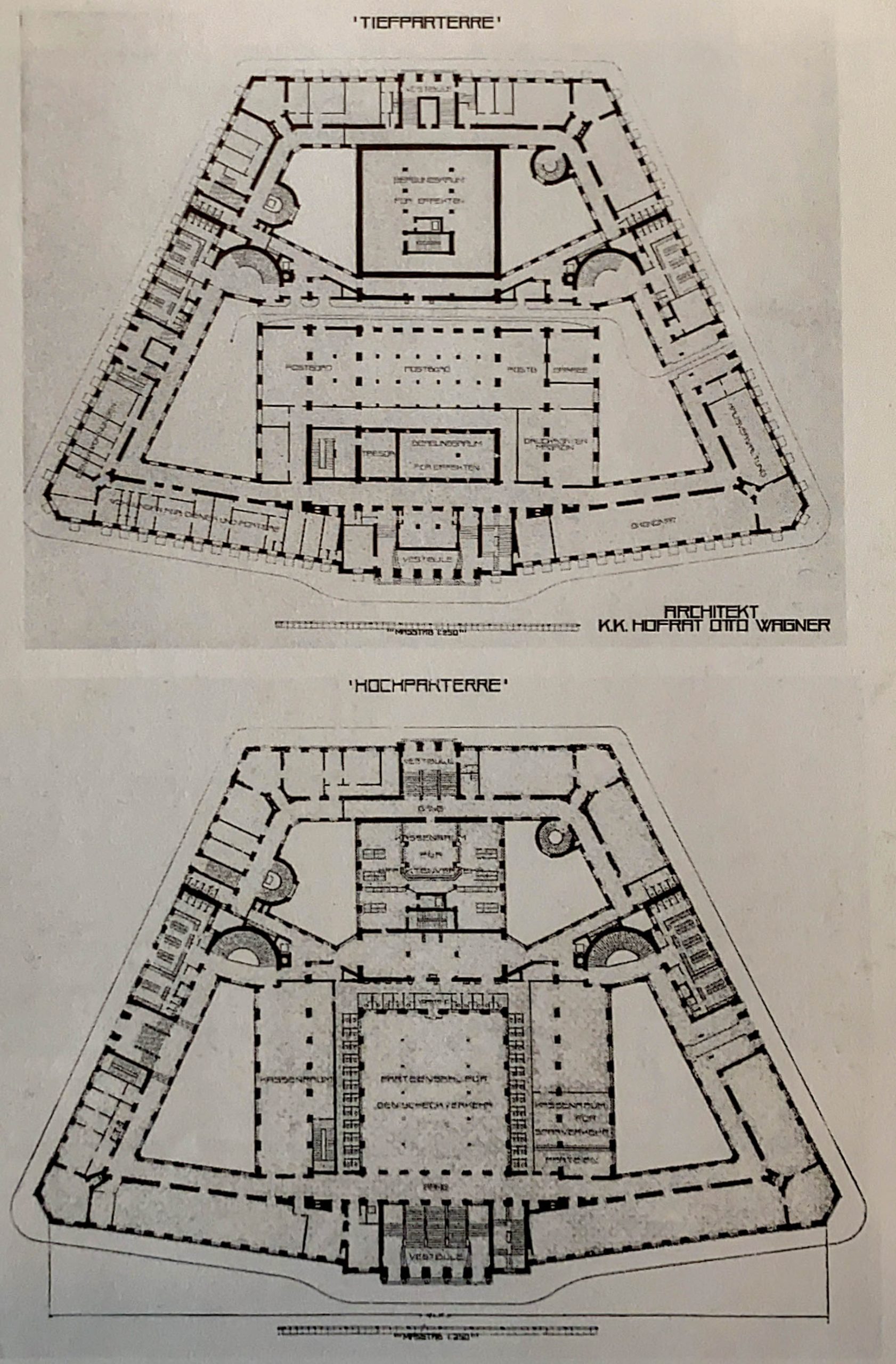
Postal Savings Bank, first floor and mezzanine floor plans, 1904-1912. Architect: Otto Wagner

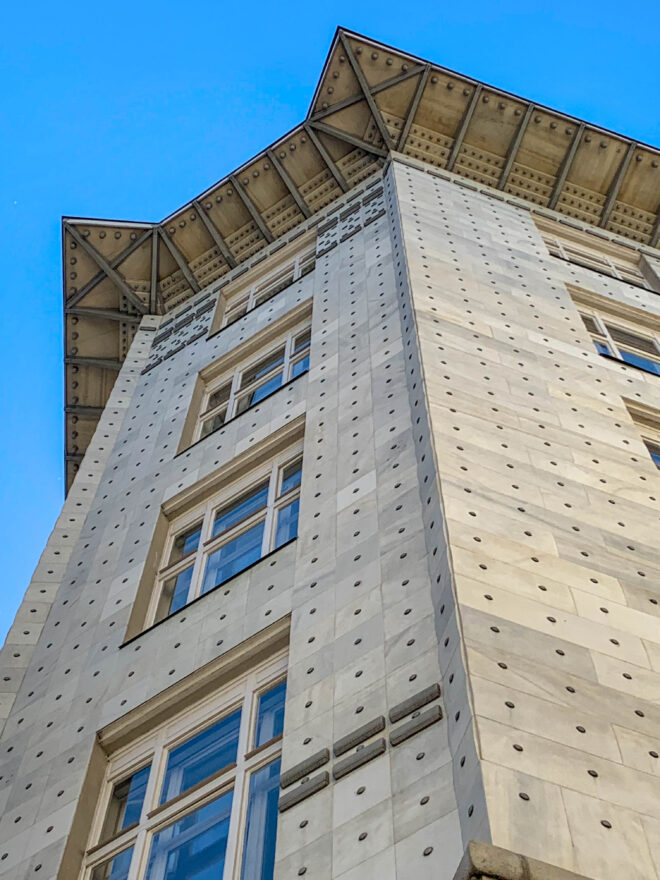
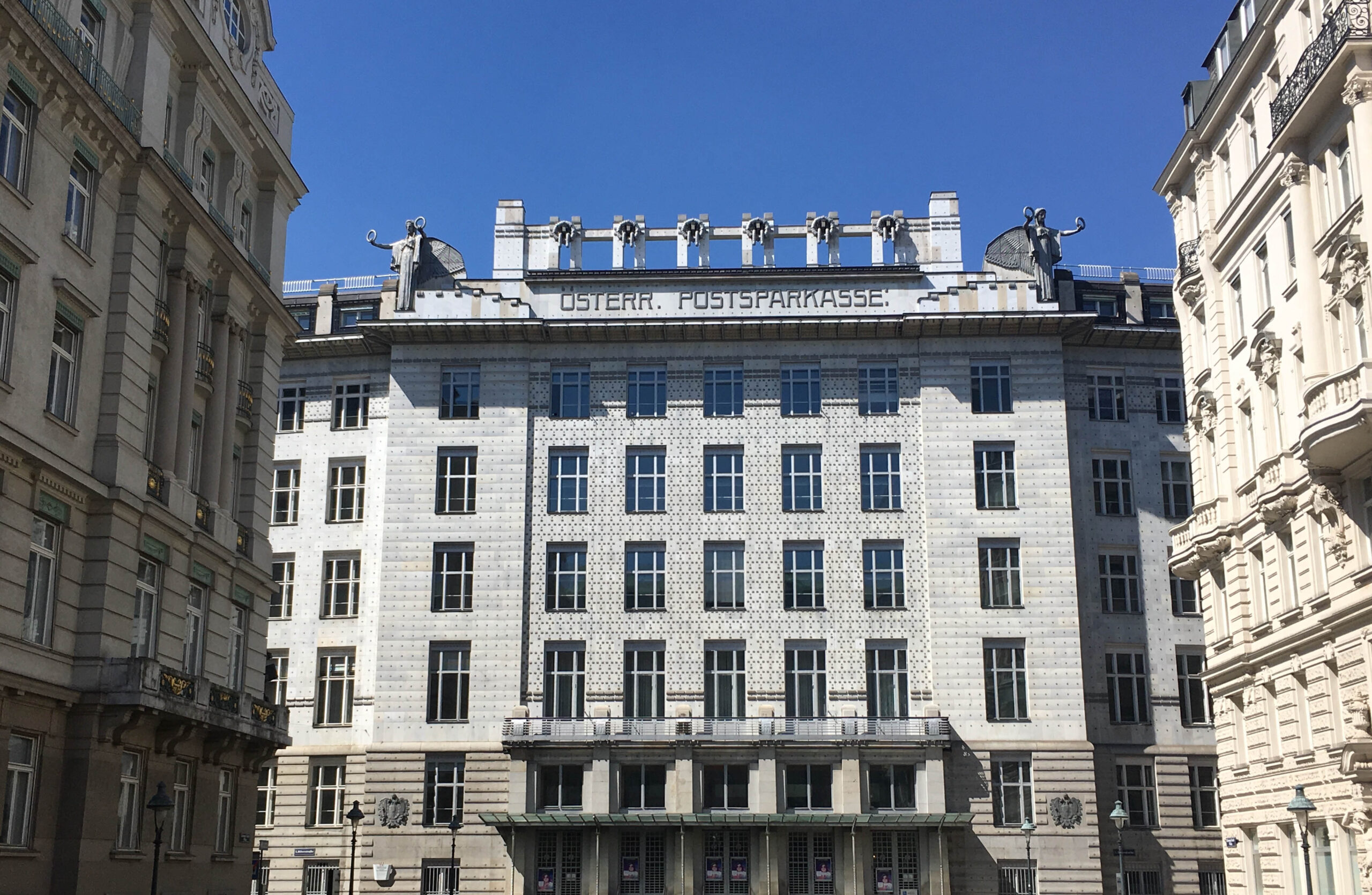
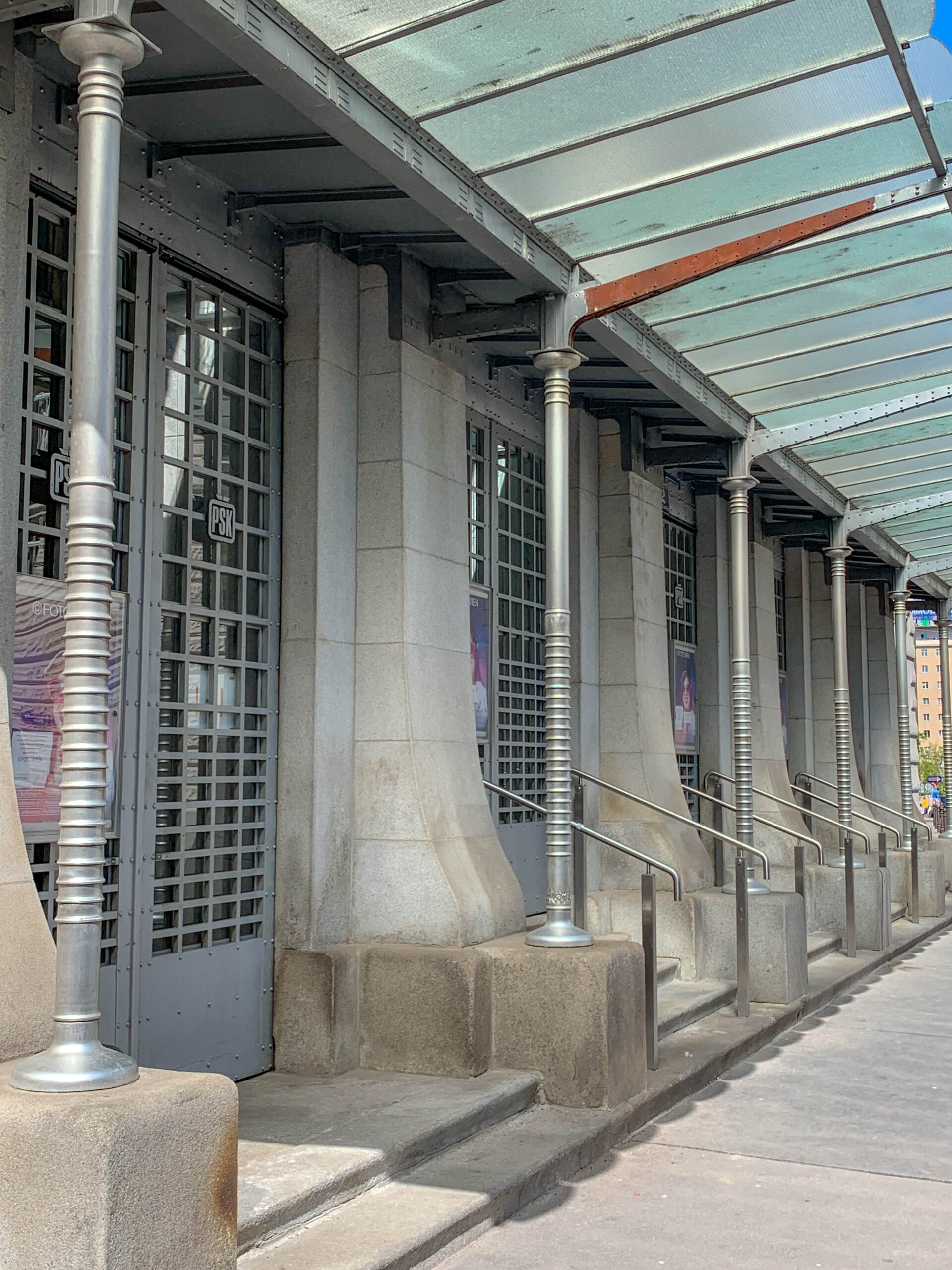
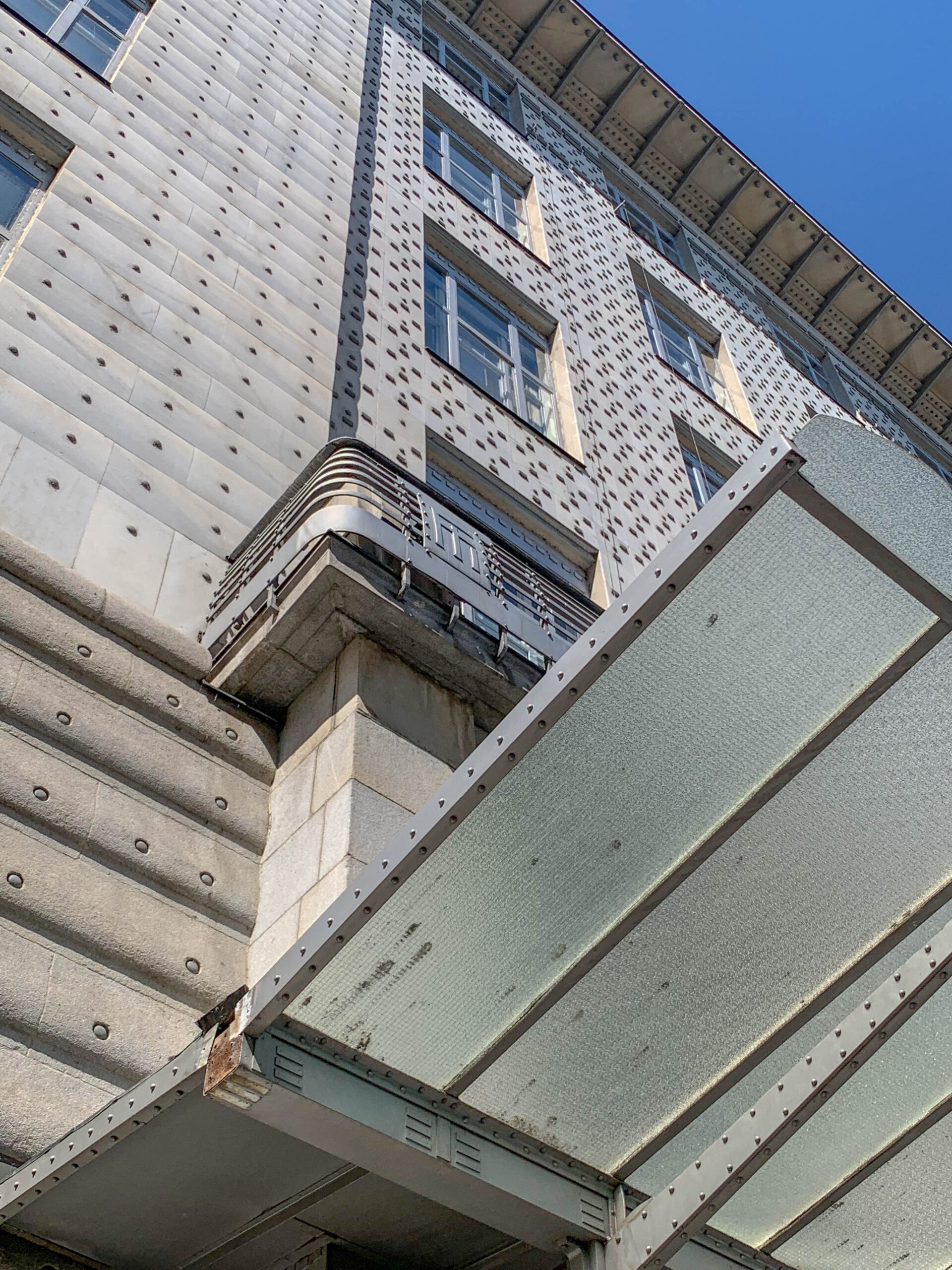
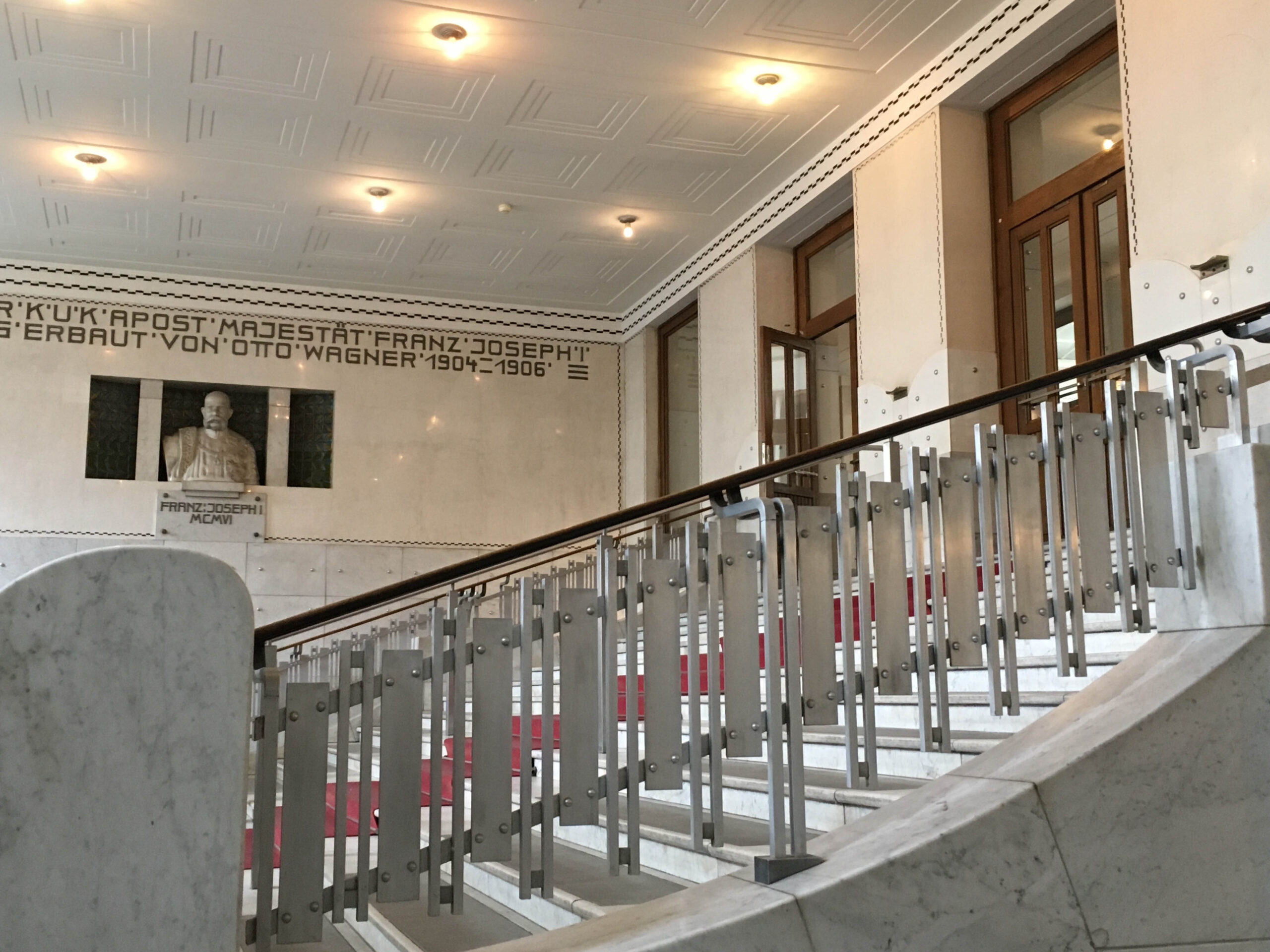
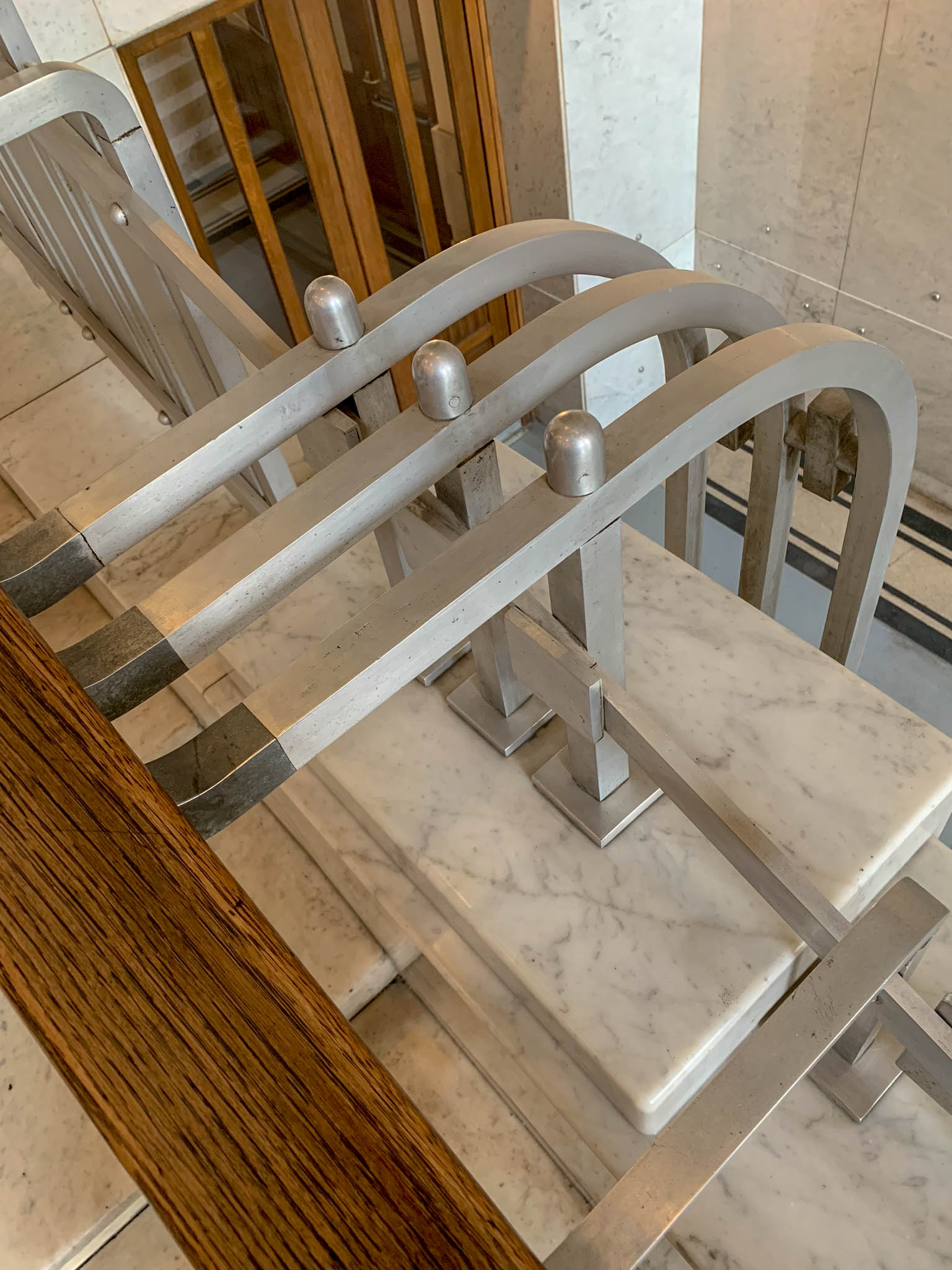
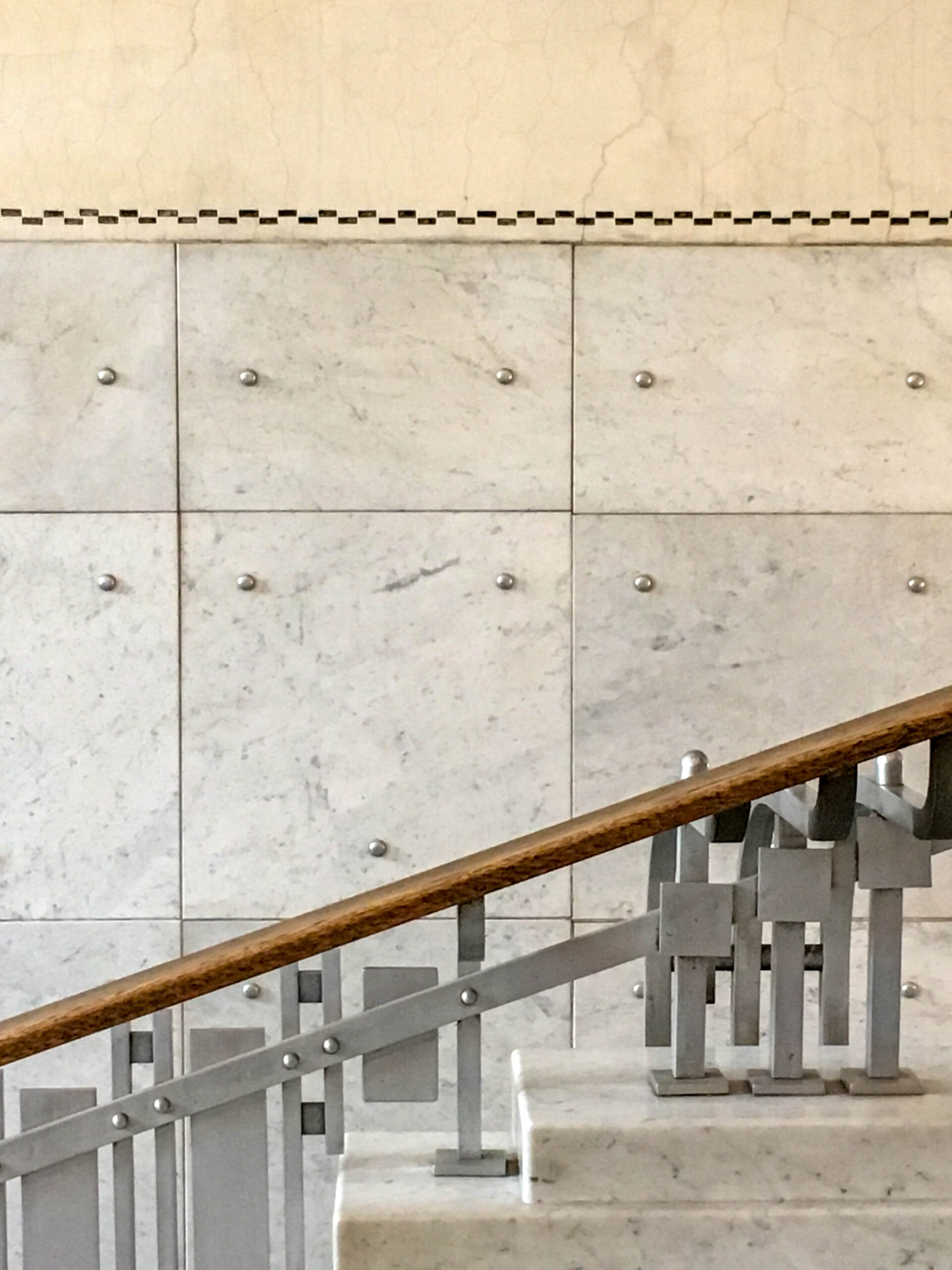
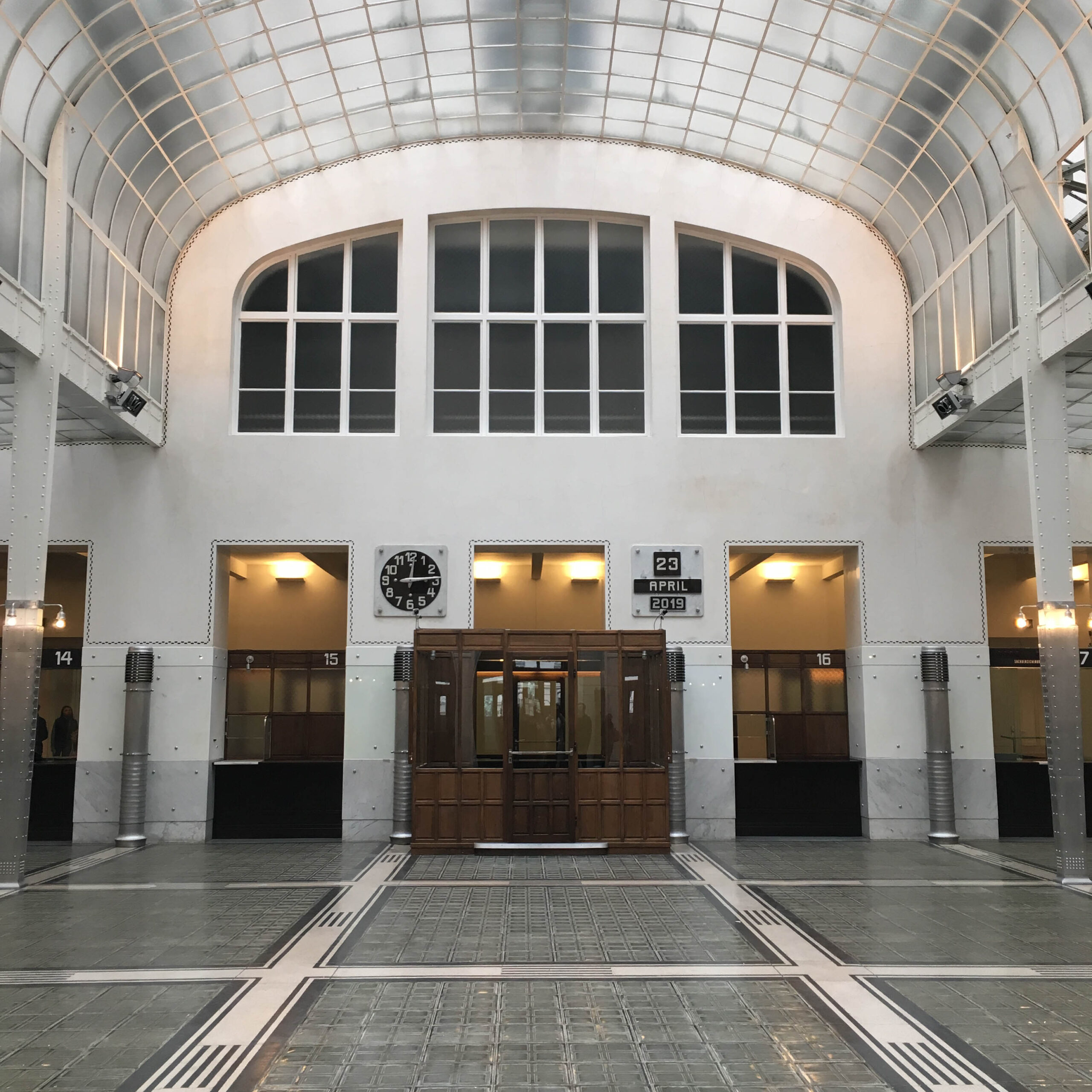
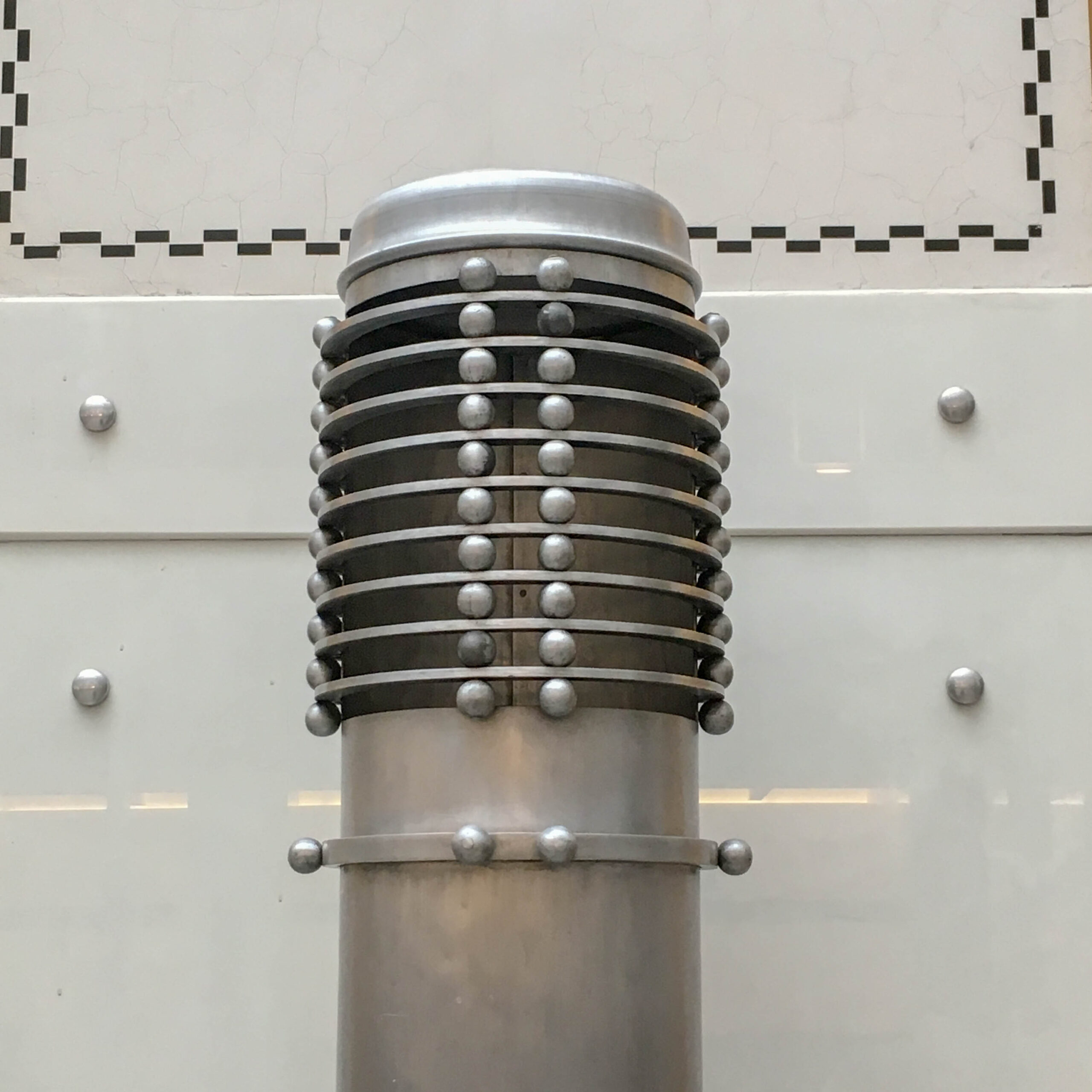
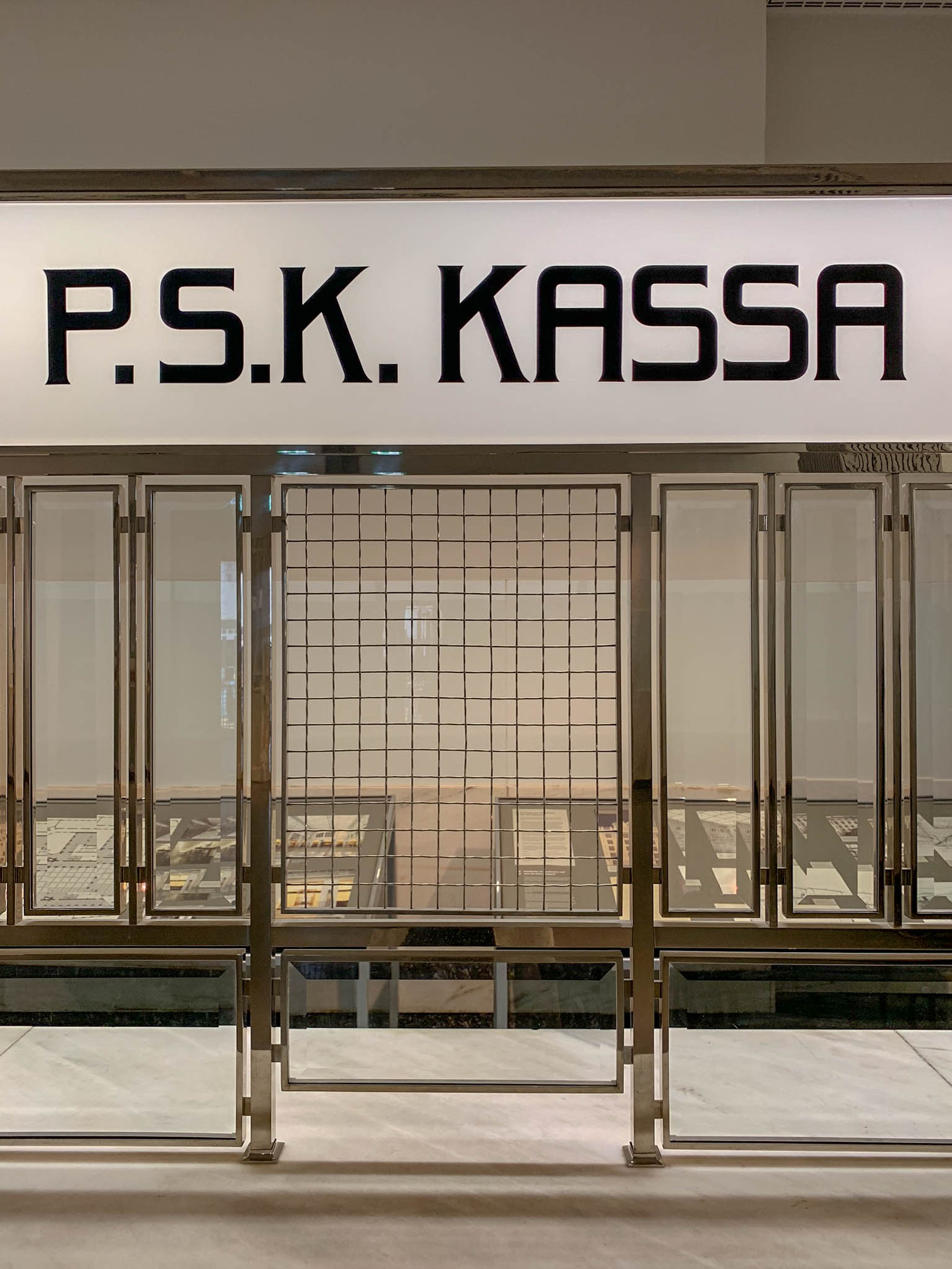

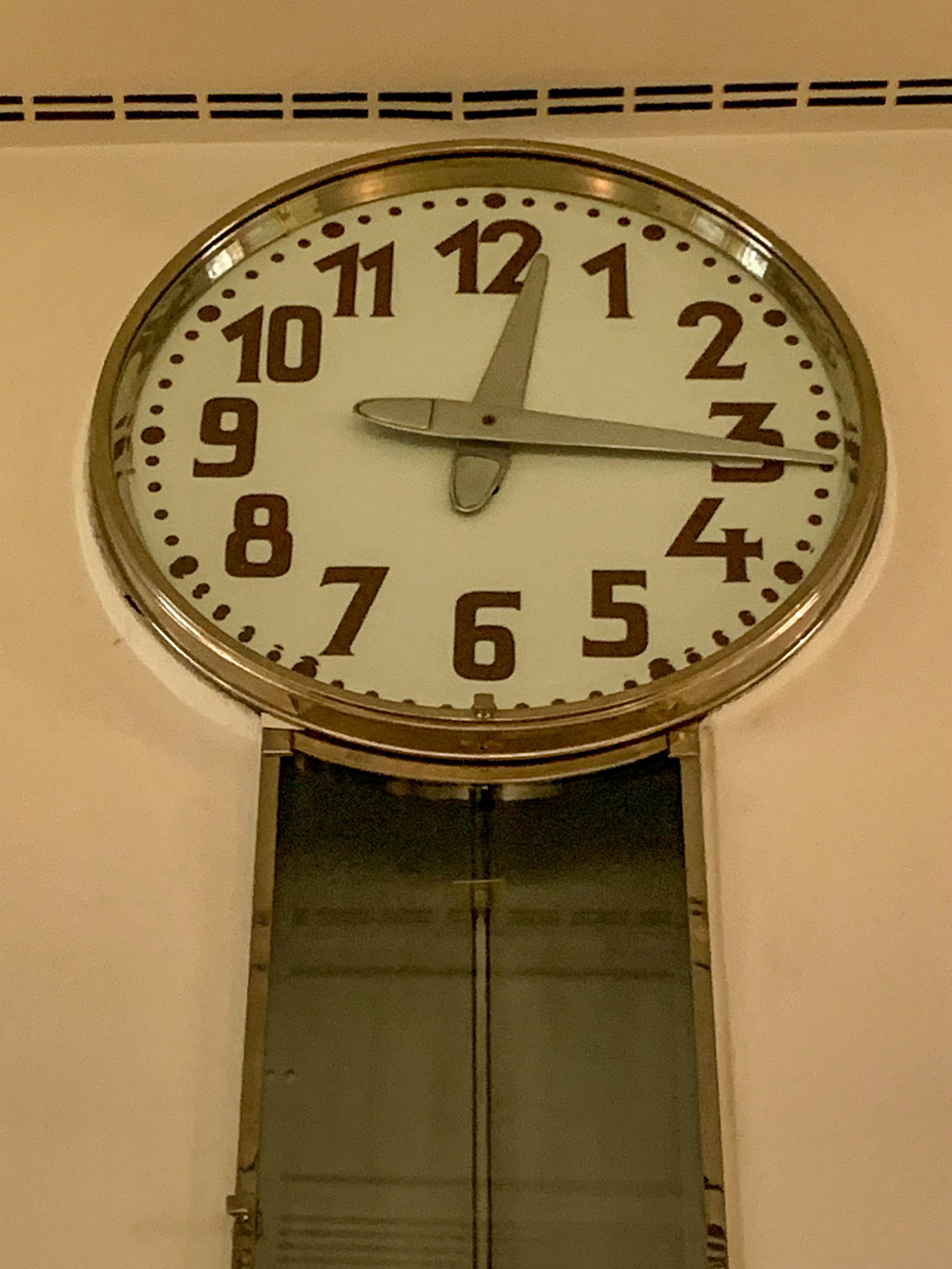
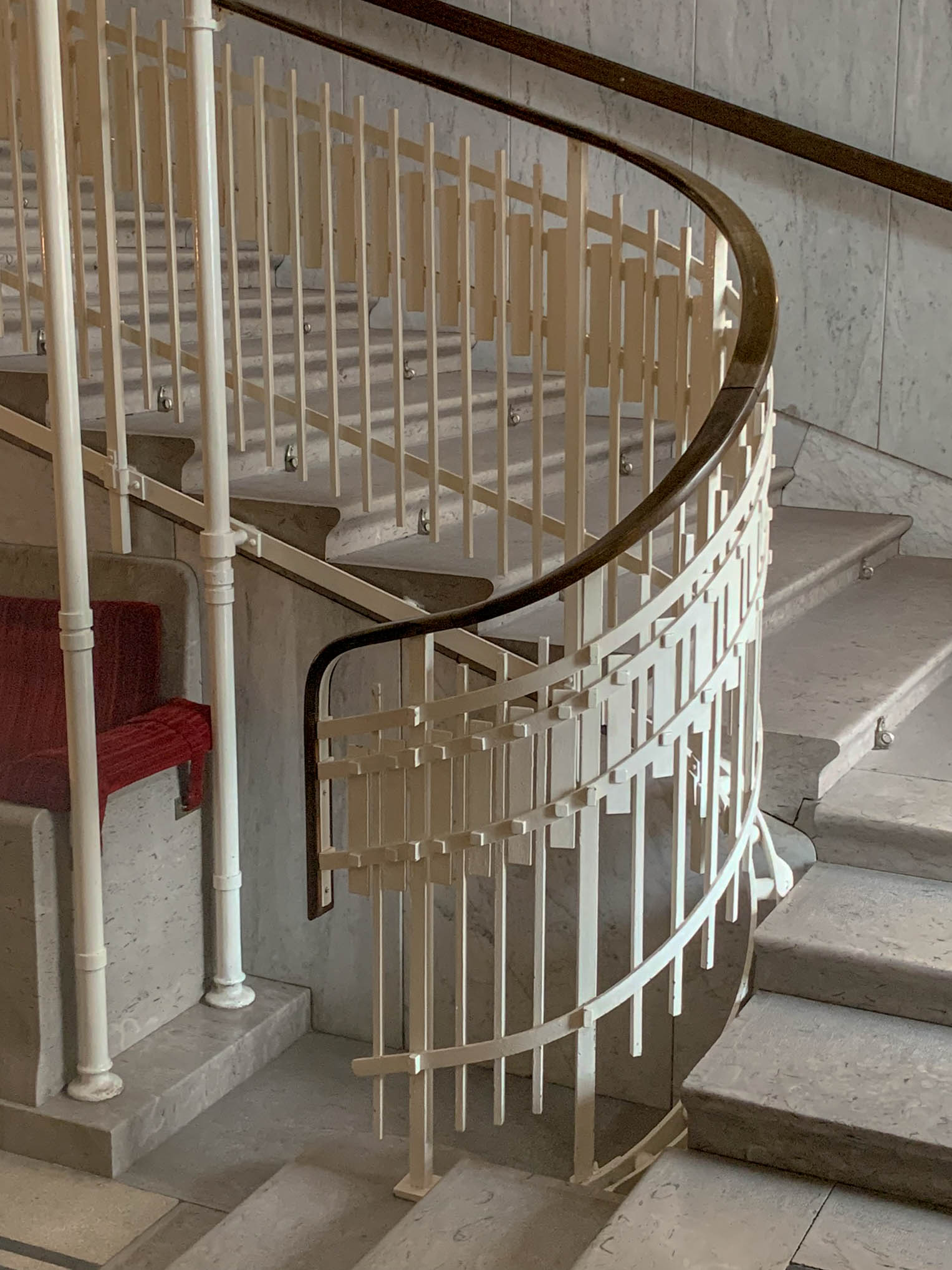
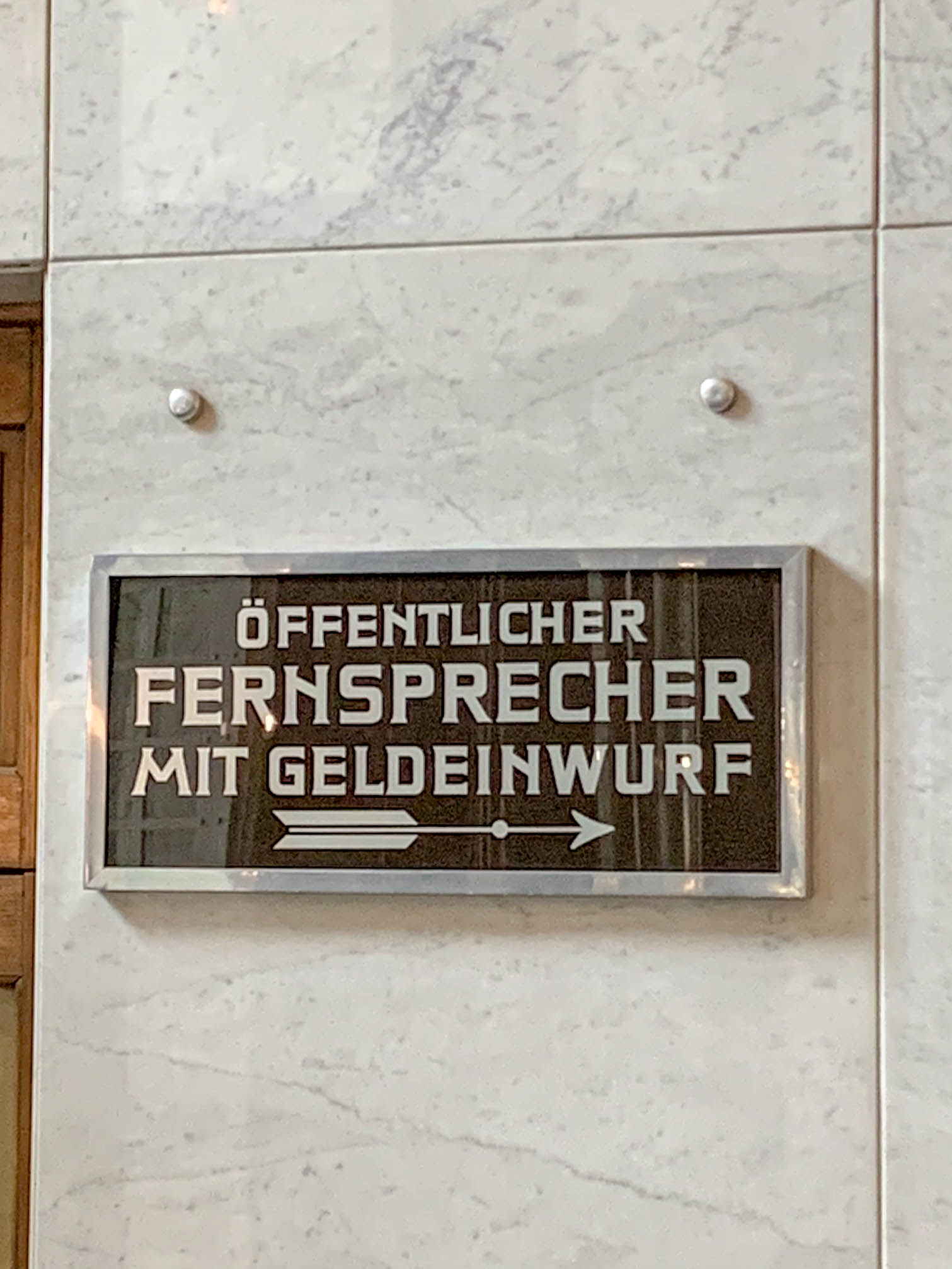
Thank you for making me aware of your website. I chased Otto Wagner’s work and the other Vienna Werkstatte buildings all over Vienna. The Post Office is absolutely stunning.
You have catalogued so many wonderful buildings in these four countries here. Very well done.
I will enjoy exploring your website.
Thank you for the kind words! I am also very enthusiastic about the Viennese Modernist buildings. Every week I present a new building on my website and I am pleased if you enjoy it.